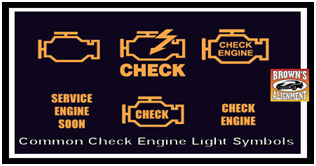Why On-Board Diagnostics (OBDII)?
The Environmental Protection Agency (EPA) has established regulations that mandate standard requirements for on-board diagnostics (OBDII) systems in all vehicles sold in the United States. The OBDII system monitors the functionality of emission-related components and systems in the vehicle. It ensures the proper operation of various components within the system, contributing to the maintenance of safe levels of exhaust emissions throughout the vehicle’s lifespan.
Visit the EPA’s website for more information about vehicle emissions regulations and on-board diagnostics (OBD).
What Is the Connection Between On-board Diagnostics and Vehicle Emissions?
The OBDII computer can detect a system problem before the driver notices a drivability issue. Additionally, OBDII can identify problems that may escape notice through visual inspection, as many component failures that impact emissions can be electrical or even chemical in nature. By identifying these emission-related failures and notifying the driver of the potential need for repair, the EPA aims to ensure that vehicles are repaired before emissions pose a problem.

How Does the OBDII System Inform Drivers of Problems?
When the on-board diagnostic (OBDII) system detects a problem, a “Diagnostic Trouble Code” (DTC) in the computer’s memory. Simultaneously, the computer activates a dashboard light that may appear as one of the following: “Service Engine Soon”, “Check Engine”, or an engine-shaped symbol. This light alerts the driver that a problem has been detected, signaling the need for vehicle service.
It’s important to recognize that the check engine light serves to alert the driver to the need for service. It does not indicate a requirement to stop the vehicle immediately, however, seeking service as soon as possible is advisable.
Why Is My Check Engine Light Blinking or Flashing?
Under certain conditions, the OBDII computer causes the check engine light to blink or flash. A flashing CEL indicates a significant engine misfire. In such instances, the driver should promptly reduce speed and seek service. A prolonged period of severe engine misfire can lead to substantial damage to emission control system components, particularly the catalytic converter, which is typically the costliest of emissions components to replace. Drivers are also advised to refer to their vehicle owner’s manual for manufacturer-specific information.
Visit our check engine light page for more information.
